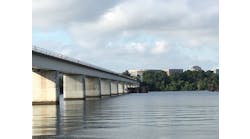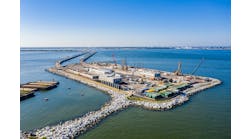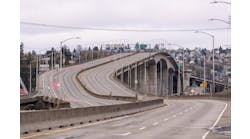Guidelines for inspecting, maintaining and rehabilitating
highway and rail transit tunnels from coast to coast are now available in two
new manuals and a computer software program jointly produced by the Federal
Highway Administration (FHWA) and the Federal Transit Administration (FTA). The
Highway and Rail Transit Tunnel Inspection Manual and Highway and Rail Transit
Tunnel Maintenance and Rehabilitation Manual, along with a software program to
collect data on tunnel components, present the first nationwide tunnel
management system. FHWA and FTA developed the manuals with the common goal of
providing uniformity and consistency in assessing the physical condition of
various tunnel components. With numerous tunnels in the U.S. now more than 50
years old and beginning to show signs of considerable deterioriation,
particularly due to water infiltration, such assessments are vital. Also
outlined are best practices for maintenance and rehabilitation, which are
designed to extend the service life and reduce operating expenses of tunnels.
The inspection manual defines major tunnel components and
systems and then describes the fundamentals of tunnel inspection, including
sections on preparing for an inspection, recording inspection results and
recommended safety practices. Suggested standard forms are included that can be
used to record the actual structural condition codes noted during the
inspection. Inspection procedures are outlined for structural elements,
mechanical systems, electrical systems and other systems/appurtenances,
including specific defects to look for during the inspection. Also included are
recommended procedures to follow in the event that the inspection reveals
defects that require immediate repair. The final chapter offers suggestions on
how to properly record the results of an in-depth inspection. Repair priority
definitions are presented so that the individuals writing the inspection report
can classify the defects based on definitions for critical, priority and
routine classifications.
The maintenance and rehabilitation manual provides specific
recommendations for performing preventive maintenance on the tunnel structure,
mechanical systems, electrical elements, track systems and miscellaneous
appurtenances. Also presented are recommendations for making structural repairs
to various types of tunnel liner materials, including how to slow, stop or
adequately divert water infiltration.
A detailed section also addresses the various structural
repairs that can be made to concrete, such as repairing cracks and spalls. The
manual’s appendix includes a general discussion of life-cycle cost
methodology.
The TMS software program is designed to allow highway and
transit tunnel owners to monitor the physical condition of their tunnel
features. If used over a period of time, the software will provide a tool for
the owners to see trends in the performance of particular components of their
systems.
The software provides owners with online access to data that
documents component conditions. This data is in the form of condition ratings,
sketches and photographs of defects, inspector comments, repair logs and costs
associated with repairs. The user interface allows access to the data through a
graphical click-and-point method.
Electronic copies of both manuals are now available on the
Transportation Asset Management Today Community of Practice website
(assetmanagement.transportation.org).
The computer software program will be posted on the site
early this summer. The site is sponsored by the American Association of State
Highway & Transportation Officials, with support from FHWA and the
Transportation Research Board. To download the manuals, click on ?Tunnel
Management? and then ?Reference.? The tunnel management
section of the website also features articles and other reference documents, a
discussion area, announcements of upcoming events and a directory section. The
directory lists names and contact information for those who have joined the
Community of Practice.
The new state-of-the-art tunnel management technology is an
important tool that all highway and transit agencies can use to better assess
and maintain their tunnel systems. The ultimate benefits are a longer, safer
and more cost-effective service life for this critical link in our
transportation system.


